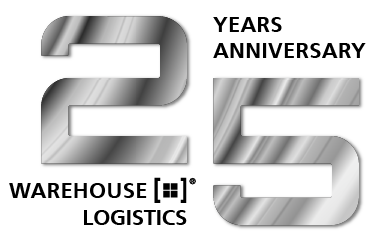News
The Consumer Products Supply Chain: A Changing Consumer Affects Financial Dynamics
15.05.2017
Spend Matters welcomes this guest post by Guy Courtin, vice president of industry and solution strategy at Infor Retail.
Tell me if you’ve heard this before: the world of retail has changed. The balance of power has shifted from retailers, and the brands they carry, to the consumer. And the consumer — rich with choices on where to shop, how to shop, when and what products to buy — holds all of the power.
How did we get here? Much of it comes down to digital transformation, and the pace at which consumers have adopted and leveraged new technology, social media and cheap connectivity. As customers went digital, so too did the expectation that businesses would do the same. Think e-commerce, mobile technology, social media and mobile payments, to name a few.
Traditional retailers are being forced to shift their perspective on inventory, align with customer needs and better integrate e-commerce and mobile commerce — all while facing the pressures of an ever-changing retail landscape. But what about consumer product goods companies (CPG)? Are they immune from these changes? Absolutely not.
CPGs and retailers have long had an interesting relationship. For all their brand equity, which often outshines that of their retail partners, CPGs rely on retailers to sell their products. Without these products to stock their shelves, many retailers would have a hard time staying in business. But through the rise of digital technology, CPGs have also gained easier direct access to consumers — something that would have been impossible without retail partners in the past. Retailers, in the meantime, are increasingly moving into private label, putting them in direct competition with CPG firms. Indeed, both parties walk a fine line.
This shifting landscape, driven by technology and the rise of the consumer, has a direct effect on the CPG supply chain, as well — particularly for those who are looking to sell directly to the consumer. This new operating model has the potential to bring in new revenue, but it can also stretch the supply chain thin. Here’s how:
-
Strain on new product introduction. Consumers’ demands are growing fast, with little sign of a slowdown in sight. CPG firms must become even more nimble when it comes to introducing new products and improving on existing products. From an investment perspective, it requires a better alignment between process and technology. Could it add extra costs? Absolutely. But the investments made today will be vital to keep up with the demands of tomorrow.
-
Increased importance of product mix. It’s not simply new products, but the variety of offerings. Think of the variety of toothpaste available at your local grocery store. It’s not just a matter of brand preference. There’s toothpaste for people with sensitive teeth, for those who want whiter teeth, fresher breath, or who care about the ingredients. Clearly, there’s enough demand to warrant a greater product mix. But on the other hand, the reality is that there may be too many options or not enough differentiation between product lines. Savvy CPG firms must find ways to manage this balance when it comes to their product variety.
-
Greater complexity with execution. As more CPGs move closer to the consumer, the expectation will change, as well. Selling direct to the consumer isn’t the same as selling to a retailer. Is the supply chain equipped to keep up with the steady pace of retail, while also serving a more fluid — and volatile — segment of individual shoppers? In this scenario, more pressure (and cost) falls on supply chain execution. It requires more dynamic warehousing, nimble transportation nodes and even last mile delivery functionality many CPG companies don’t have right now. This has the potential to add a layer of complexity and cost to their supply chains.
-
Increased reliance on data. CPG firms are already well versed when it comes to leveraging data to better understand consumer behaviors. As CPG firms look to continue to grow their relationship with consumers, getting closer to not only their needs but also directly fulfilling the need for better data will continue to grow.
- New distribution models. With the emergence of new business models, such as subscription-based distribution, CPGs will now have a more direct connection to consumer demand. It bypasses the traditional retail distribution models, where forecasting is optimized for cost savings and repeatability. As more of these models emerge, how will CPG’s supply chains be prepared to handle these demands?
The shifting landscape of CPG blurs the lines between retailers and manufacturers. But for the end consumer, is there really any difference? Consumers don’t distinguish between CPG or retail brands. To consumers, it is the brand that matters, and their expectations revolve around getting satisfaction from the brands — regardless if their SIC codes place them as a retailer or a CPG. In the modern age of ambient commerce, where consumers will expect and demand the ability to transact anywhere and anytime, both retailers and CPG firms must adapt to this new model.
